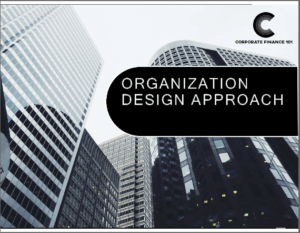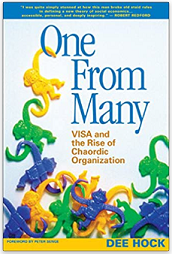This post has looks at the Hock Principle: what it is, examples in practice, and implications for strategy and project management. It ends with a short video from Dee Hock himself.
What Is the Hock Principle?

Dee Hock, founder of credit card giant VISA, developed a maxim which became known as The Hock Principle.
The Hock Principle is as follows:
Simple, clear purpose and principles give rise to complex and intelligent behavior. Complex rules and regulations give rise to simple and stupid behavior.
The Hock Principle emphasizes the importance of simplicity in organizational design and decision-making.
According to Hock, when an organization has a clear and simple purpose, and principles that guide behavior, it can lead to complex and intelligent behavior. This is because individuals within the organization are empowered to use their own judgment and creativity to achieve the organization’s goals.
On the other hand, when an organization relies too heavily on complex rules and regulations, it can lead to simple and even stupid behavior. This is because individuals may become overly reliant on following rules rather than using their own judgment and creativity.
In summary, the Hock Principle suggests that simplicity and clarity in organizational design and decision-making can lead to more intelligent and effective behavior, while complexity and rigidity can lead to simple and ineffective behavior.
Interestingly, after 16 years at Visa, during which he built VISA to be decentralized, Dee Hock retired in 1984 to work a 200-acre farm west of Silicon Valley – a seemingly “simpler” lifestyle. Mr. Hock coined the word “chaordic” – a merging of chaotic and orderly. He has multiple books on the topic, including “One from Many – VISA and the Rise of Chaordic Organization” and “Birth of the Chaordic Age“.
Examples of the Hock Principle in Practice

The Hock Principle has been used in practice in a variety of ways, particularly in the realm of organizational design and leadership.
Here are a few examples:
- Simplifying Organizational Structures: Many companies have restructured their organizations to simplify decision-making and empower employees. For example, Zappos, the online shoe and clothing retailer, adopted a “Holacracy” model that eliminates traditional job titles and hierarchies in favor of self-organizing teams that are guided by a clear purpose and principles.
- Creating Guiding Principles: Companies have developed guiding principles that provide a framework for decision-making and behavior. For example, Google’s “Ten Things We Know to Be True” is a set of guiding principles that helps to define the company’s culture and approach to innovation.
- Empowering Employees: Leaders have focused on empowering employees to make decisions and take risks. For example, Netflix CEO Reed Hastings has famously said that his job is to “build a company that is resilient in the face of mistakes.”
- Reducing Rules and Regulations: Companies have reduced rules and regulations to encourage innovation and creativity. For example, 3M, the innovation-driven manufacturing company, encourages employees to spend 15% of their time working on projects that are not part of their job description. Google has a similar policy.
In each of these examples, the Hock Principle has been used to promote simplicity and clarity in organizational design and decision-making, which has led to more intelligent and effective behavior.
Strategy and the Hock Principle
 Strategy derives impact from the Hock Principle primarily in the area of organizational design. The Hock Principle emphasizes the importance of simplicity, clarity, and alignment around a clear and compelling purpose,
Strategy derives impact from the Hock Principle primarily in the area of organizational design. The Hock Principle emphasizes the importance of simplicity, clarity, and alignment around a clear and compelling purpose,
These principles are also reflected in a number of strategic frameworks that are used to guide decision-making and behavior in organizations. Here are a few examples:
- OKRs (Objectives and Key Results): OKRs are a goal-setting framework that helps organizations to align around a clear and compelling purpose and track progress towards achieving it. OKRs are typically set at the organizational, team, and individual levels, and they provide a way to measure success and ensure that everyone is working towards the same goals.
- Blue Ocean Strategy: Blue Ocean Strategy is a framework for creating uncontested market space by focusing on innovation and creating value for customers. This framework emphasizes the importance of simplicity and clarity in identifying and pursuing new opportunities, as well as aligning the organization around a common purpose. Blue Ocean Leadership maxims borrow in these ways from the Hock Principle.
- Balanced Scorecard: The Balanced Scorecard is a strategic management framework that helps organizations to track and manage performance across multiple dimensions, including financial, customer, internal processes, and learning and growth. The framework emphasizes the importance of a clear and compelling purpose, as well as aligning goals and metrics across different levels of the organization.
- Lean Startup: The Lean Startup is a framework for developing new products and services through a process of rapid experimentation and iteration. This framework emphasizes the importance of simplicity, learning, and alignment around a clear and compelling purpose, as well as providing the autonomy and support that teams need to innovate and create value.
In each of these frameworks, the principles of simplicity, clarity, and alignment around a clear and compelling purpose are central to success. By focusing on these principles, organizations can create a shared vision and sense of purpose, align their resources and efforts, and track progress towards achieving their goals.
The Hock Principle also applies very closely to other organization-centric strategic frameworks such as:
- McKinsey 7S Framework Model – Helps take a holistic look at the organization’s readiness to implement a strategy.
- Digital Transformation Strategy Framework – Looks from different ‘angles’ at the possibility of digital transformation.
- 80:20 Strategic Work Breakdown Structure – Breaks down strategic considerations into the most important few.
- Resource Based View – Takes a view of strategic capabilities based on resources available.
- Business Model Innovation – How innovate to simplify a business model.
- Economies of Scope – Expanding scope of activities efficiently to gain economies for competitive advantage.
- Network Effect – Building networks powerfully but efficiently for competitive advantage.
For a ppt toolkit helpful for effective organizational design, I recommend you consider the following (paid links):
- Organization Design Toolkit – Organization Design Approach and supporting Organization Design Toolkit consisting of 103-slide ppt with supplemental Excel document. Provides a framework for organizational design and tools to assist with implementation of the framework.
- Organizational Design for High Performance – A 42-slide framework for organizational design, providing a blueprint for implementing organizational change and framework for determining degree of centralization.
Project Management: The Hock Principle and Agility
With the Hock Principle, I immediately begin thinking of lean agile project management and digital transformation.
The following describes how the Hock Principle provides part of the foundation for two of the most popular scalable agile frameworks, SAFe and LeSS:
The Scaled Agile Framework (SAFe):
The Hock Principle has been used as a guiding principle in the SAFe methodology, which is a popular approach to implementing Agile practices in large-scale organizations. SAFe emphasizes the importance of a clear and compelling purpose, as well as guiding principles, to align teams and promote autonomy and innovation.
SAFe’s Agile Manifesto Principle #5 is “Build projects around motivated individuals. Give them the environment and support they need, and trust them to get the job done.” This principle is in line with the Hock Principle, as it emphasizes the importance of empowering individuals to use their judgment and creativity to achieve a common goal.
SAFe also includes the concept of “Lean-Agile Principles,” which are intended to guide decision-making and behavior at all levels of the organization. These principles are based on simplicity and continuous improvement, which are also core components of the Hock Principle.
Therefore, the Hock Principle has influenced the development of SAFe and is consistent with its core principles and practices.
Large Scale Scrum (LeSS):
The Hock Principle has played a role in the LeSS agile methodology. LeSS is a framework for scaling Scrum to larger organizations, and it emphasizes simplicity, clarity, and alignment around a common purpose as key principles for success.
LeSS includes a set of guiding principles, which are based on the Agile Manifesto and Lean Thinking, and are intended to guide decision-making and behavior at all levels of the organization. Some of these principles are consistent with the Hock Principle, including:
- “Focus on the customer“ – Emphasizes the importance of a clear and compelling purpose that is centered around the needs of the customer.
- “Whole product focus“ – Emphasizes the importance of aligning teams around a common goal and providing them with the autonomy and support they need to achieve it.
- “Continuous improvement towards perfection“ – Emphasizes the importance of continuous learning and improvement, which is also consistent with the Hock Principle.
Therefore, while the Hock Principle is not explicitly mentioned in LeSS, its underlying principles are consistent with the values and practices of the framework.
Conclusion and Further Resources
This post has looked at the Hock Principle: what it is, examples in practice, and implications for strategy and project management.
Do you have any insights or experience to share about the Hock Principle?
Dee Hock wrote several books. I recommend (paid links):
 |
 |
Listen to Dee Hock himself talk about “chaordic” – the intersection of chaos and order (much in common with agile) – in this short (less than 2 minutes) video:
I recently read your article on the Hock principle and its application in strategy project management, and I found it to be a fascinating perspective on how to approach complex projects with a long-term strategic focus. Your insights into the importance of taking a systems approach to project management, and the need to balance creativity and control were particularly insightful, and I appreciate the way you provided a clear overview of the Hock principle and its relevance to project management.
I particularly liked your emphasis on the need to balance creativity and control when managing strategic projects. As you noted, too much control can stifle innovation, while too much creativity can lead to chaos and missed deadlines. I also appreciated your insights into the importance of building strong teams and fostering collaboration, and your emphasis on the need for ongoing learning and development.
Overall, your article is a great resource for anyone who wants to learn more about the Hock principle and its relevance to strategy project management. Your insights are practical and applicable, and I appreciate the way you provided real-world examples and actionable advice that can be put into practice right away. I hope to apply some of your tips to my own work and look forward to reading more of your work in the future. Thanks for sharing your expertise! Learn more:
Thank you for your thoughtful and thorough comment. I thought the Hock Principle was interesting in that it takes an agile approach at the whole corporate business level. It calls for an orderly way of dealing with inevitable and constant change and resulting chaos.